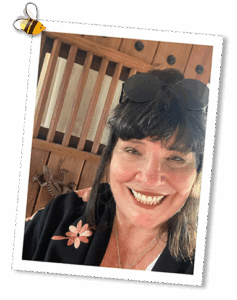About the Author
When Claire was eight years old, her mother taught her how to sew a pair of pajamas. One day she asked for a dress that she had seen in a department store window and the reply was, “Why don’t you make one just like it, instead?” So she did. And by the time she was a teenager, Claire was making bikinis and Nehru jackets for family and friends.
Ten years later, Claire was sitting in the park with her paintings when her brother suggested she go back to school to study computer science. Although she had no interest in computers, she took the entrance exam anyway, just to make him happy.
It was the late seventies and her only computer experience was using an FTD terminal in a florist shop. However, it occurred to her that studying computer science might help her find a job designing computer games. She remembers going home after class and getting down on the floor to draw pictures of operating systems and telecommunications to help her understand.
Before long, Claire landed an interview with the head of development for a small video game company. She shared with him her storyboard for an original game concept that was based on a childhood memory of her dad bombing gophers in the garden. He liked it and asked if he could take it to the back office for a minute. She said, “Sure!” but never heard back after the interview. A couple of weeks later, she followed up and was told that the company had been acquired by a Sega and the guy who interviewed her went to Atari.
A couple of years later while at Chuck E. Cheese with her boys, one of them said, “Hey Mom! There’s your game!” And there it was. So although she didn’t get the job, Claire lays claim as mother of the classic video arcade game, “Dig Dug.”
Fast forward and Claire, now in her early seventies, is retired after a forty-year career in the software industry, where she produced user training and product documentation for innovators such as Magento, eBay, and Adobe. She credits her easy-to-follow tutorials to the years she spent deciphering sewing instructions.

Claire Condra, author of
Using an Enclosed Apiary &
HoneyBower Maker’s Guide
Claire’s home is on the site of a former citrus grove and is graced by many trees, including a Seville orange that is traditionally used to make marmalade. In 2017, Claire’s marmalade won Gold and Silver in the homemade category at the Dalemain World Marmalade Awards in the United Kingdom.
Soon after, Claire came across a video of the Flow Hive from Australia with faucets that dispense honey. Within a few months, she had her beekeeping license and zoning permit.
While preparing the site, it occurred to her that using an enclosed apiary might be a good way to deflect palm fronds that sometimes fall from her neighbor’s trees during storms. So she made one. Then, she got a utility patent for her invention. And that, just as one thing leads to another, is how HoneyBower came to be.
